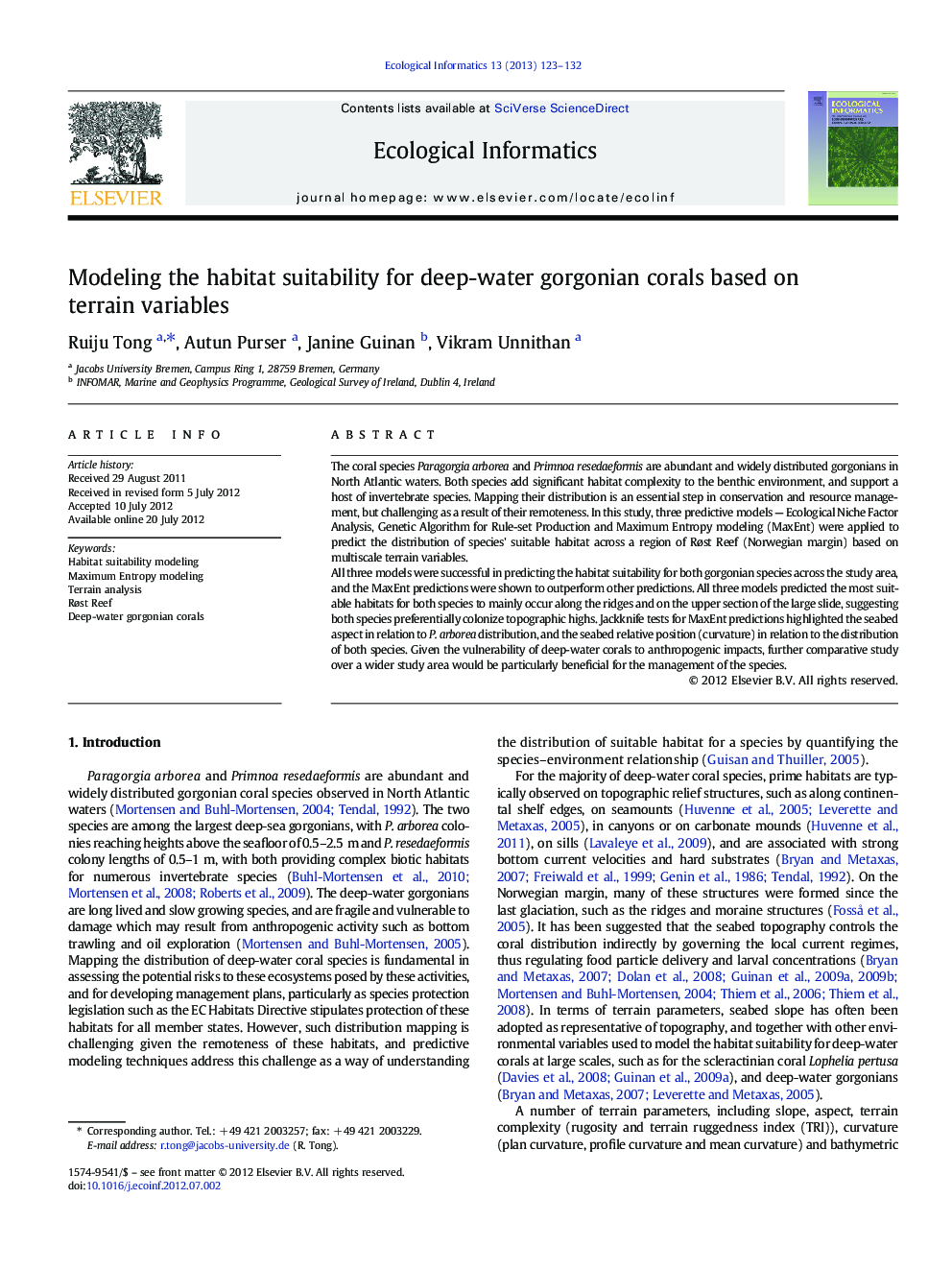| Article ID | Journal | Published Year | Pages | File Type |
|---|---|---|---|---|
| 4375018 | Ecological Informatics | 2013 | 10 Pages |
The coral species Paragorgia arborea and Primnoa resedaeformis are abundant and widely distributed gorgonians in North Atlantic waters. Both species add significant habitat complexity to the benthic environment, and support a host of invertebrate species. Mapping their distribution is an essential step in conservation and resource management, but challenging as a result of their remoteness. In this study, three predictive models — Ecological Niche Factor Analysis, Genetic Algorithm for Rule-set Production and Maximum Entropy modeling (MaxEnt) were applied to predict the distribution of species' suitable habitat across a region of Røst Reef (Norwegian margin) based on multiscale terrain variables.All three models were successful in predicting the habitat suitability for both gorgonian species across the study area, and the MaxEnt predictions were shown to outperform other predictions. All three models predicted the most suitable habitats for both species to mainly occur along the ridges and on the upper section of the large slide, suggesting both species preferentially colonize topographic highs. Jackknife tests for MaxEnt predictions highlighted the seabed aspect in relation to P. arborea distribution, and the seabed relative position (curvature) in relation to the distribution of both species. Given the vulnerability of deep-water corals to anthropogenic impacts, further comparative study over a wider study area would be particularly beneficial for the management of the species.
► We predict habitat suitability of two deep-water gorgonian species at Røst Reef. ► ENFA, GARP and MaxEnt are successful in predictions, with MaxEnt performed best. ► Predicted suitable habitats of both species mainly occur on upper-slide and ridges. ► Seabed aspect and relative position strongly correlate with species distribution.
